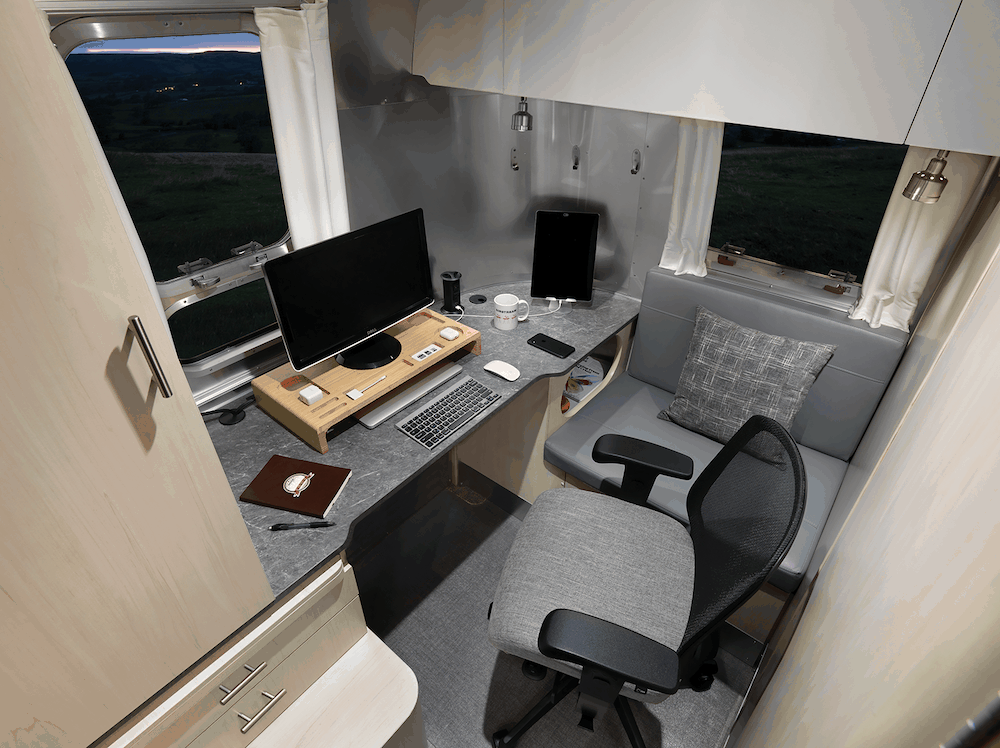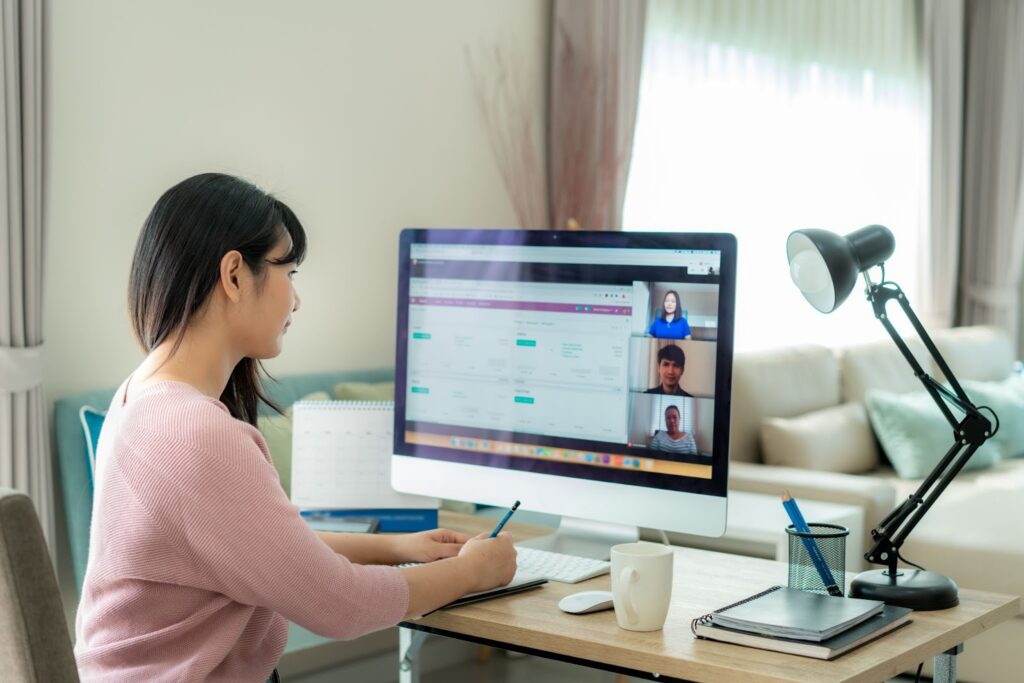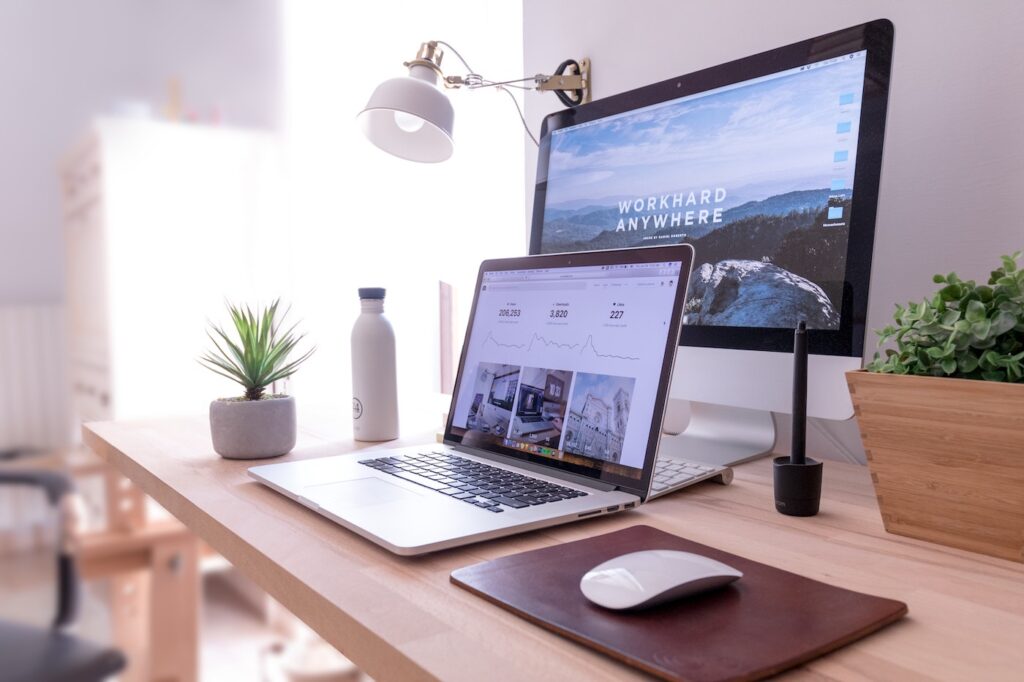
Creating a productive workspace at home involves thoughtful consideration of design elements, ergonomics, personal touches, and organization. By implementing strategies from various sources, you can transform your home office into a conducive environment for work.
Choosing the Right Space

The foundation of a productive home office begins with selecting the right location. Ideally, your workspace should be in a quiet area that allows for privacy and minimal distractions. A room that offers natural light can boost your mood and productivity significantly; such lighting is linked to better psychological well-being and a reduction in symptoms of stress and fatigue[1][7]. If the space lacks sufficient natural light, additional lighting options like LED desk lamps can alleviate eye strain[9].
Ergonomics: A Key Consideration

Prioritizing ergonomics in your workspace design is crucial for both comfort and productivity. An adjustable chair with lumbar support can reduce the risk of back pain, and a desk at the right height ensures that your arms remain parallel to the floor while typing[8][9]. Consider using a standing desk to allow for a change in position throughout the day, which can improve focus and energy levels[3][10]. Accessories such as wrist rests and footrests further enhance comfort, encouraging healthier posture[11].
Keeping It Organized

A clutter-free desk is essential for maintaining focus. Invest in organizational tools like desk pads and drawer dividers to create distinct zones for your work related items. Regularly decluttering your space can prevent distractions, as a clean workspace is associated with improved mental clarity[4][8]. Using vertical storage solutions, such as floating shelves or wall organizers, can help maximize your space without sacrificing style and accessibility[3][4].
Additionally, managing cables and devices is vital to avoid visual clutter. Cable management trays can be attached to the underside of the desk to keep your wires hidden, contributing to a more streamlined look[11]. Consider consolidating devices with a docking station to reduce the number of required cables and improve your desk’s aesthetic.
Personalizing Your Workspace

Adding personal touches to your home office can enhance motivation and creativity. Display items that inspire you, such as artwork, family photos, or motivational quotes. These items can infuse personality into your workspace while providing emotional boosts during challenging tasks[7][8][10]. Incorporating greenery, like potted plants, also improves air quality and can enhance productivity[4][5]. Low-maintenance options like snake plants or succulents are great choices for fostering a calming atmosphere.
Light and Color Psychology

The color scheme of your office plays a significant role in influencing your productivity and mood. Soft and neutral colors, accented by bold hues, can create a balanced environment that fosters both calmness and energy[9][11]. Consider utilizing colors known to enhance focus and creativity, such as blue and green, which are linked to improved mental function and relaxation[7][10].
Proper lighting is another critical aspect. Aim to use a combination of natural light and adjustable artificial lighting to create a well-lit environment that matches your tasks and enhances your mood. Dimmable lights can be adapted for different times of day to support a productive work atmosphere[7][9].
Technology and Tools

Equipping your workspace with the right technology can enhance efficiency. A reliable internet connection is fundamental, especially for remote work that involves video conferencing[8]. Invest in essential tools such as a good webcam and noise-canceling headphones to improve the quality of your virtual meetings[10][11]. Additionally, using productivity apps can help streamline tasks and manage projects effectively, allowing for better time management[8][9].
Establishing Boundaries and Routine
Creating boundaries between your professional and personal life when working from home is essential for maintaining productivity. Set clear work hours and establish a routine that includes regular breaks to help avoid burnout[6][9]. Make it a habit to step away from your workspace during breaks, which can refresh your mind and improve focus when you return to work.
Conclusion
Implementing the above strategies can significantly enhance your home workspace, allowing it to function as an effective environment for productivity. By selecting the right space, prioritizing ergonomics, organizing efficiently, personalizing your area, utilizing correct lighting and colors, and incorporating the right technology, you can create a workspace that not only supports your work but also enhances your overall well-being. With a few adjustments and thoughtful design choices, your home office can become a place where creativity and productivity thrive.
Get more accurate answers with Super Pandi, upload files, personalized discovery feed, save searches and contribute to the PandiPedia.
Let's look at alternatives:
- Modify the query.
- Start a new thread.
- Remove sources (if manually added).